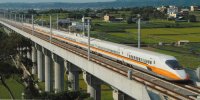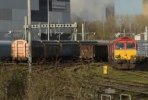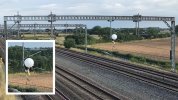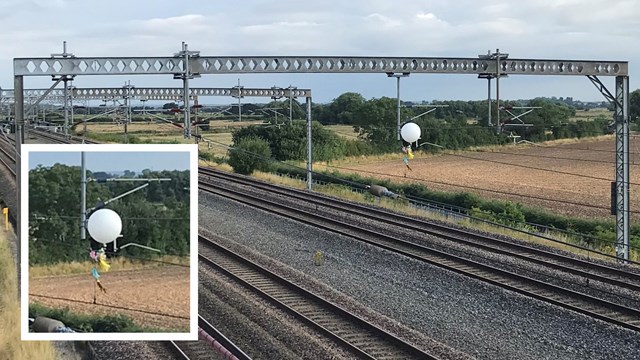Buntobox
Active Member
Can anybody tell me why it is that the overhead line equipment used in the UK these days is so bulky and apparently over-engineered? Look at this single line cantilever at Didcot...
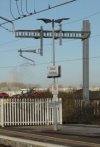
It's only holding up two 12mm wires and yet it looks as if it was designed to support the weight of a five ton truck! It's grotesquely ugly too as is all the GW main line kit, purely because of this ludicrous bulk. The stuff they put up on the Edinburgh & Glasgow is similarly heavy. Double track portals made with twin H beams across the track when previous installations only used one. Earlier electrification schemes were just not this substantial. Is it another health and safety overreaction? Looking at the enormously heavy steelwork, heavier even than they used for the Woodhead DC scheme, it's no wonder the GW electrification cost so much and had so many complaints about the visual intrusion from those living along the line.
I'm a fan of electrification but this stuff is grim.

It's only holding up two 12mm wires and yet it looks as if it was designed to support the weight of a five ton truck! It's grotesquely ugly too as is all the GW main line kit, purely because of this ludicrous bulk. The stuff they put up on the Edinburgh & Glasgow is similarly heavy. Double track portals made with twin H beams across the track when previous installations only used one. Earlier electrification schemes were just not this substantial. Is it another health and safety overreaction? Looking at the enormously heavy steelwork, heavier even than they used for the Woodhead DC scheme, it's no wonder the GW electrification cost so much and had so many complaints about the visual intrusion from those living along the line.
I'm a fan of electrification but this stuff is grim.
Last edited:

